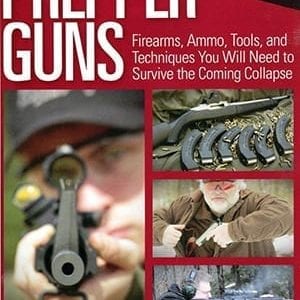If you are a hunter you know what it takes to reach this point. The final moment when it’s all on the line and it’s time to shoot. You have poured your heart and soul into getting here. All the months of hard work, the dripping blood, sweat and tears has all been leading this millisecond when you pull the trigger.
Hunting is a process, a journey and this is the last step, the final mile and what follows will be intense jubilation or the most bitter of disappointments.
A non-hunter can never understand the intensity of these emotions or how personal they are or that it’s the disappointments that linger and keep us awake at night. The shelf life of the bad endings is just about infinite.
I have written often about how the bullet is the only physical connection that a hunter has with the game. The bullet determines the final outcome every single time. It is my view that a serious hunter should never gamble with something so easily controlled. I believe that any hunter should pick a cartridge that removes all the doubt, a cartridge powerful enough to handle any worst case scenario. I also believe that it’s foolish to spend treasure and blood to get to that point in the hunt and then risk it all on a cheap bullet.
It’s an obvious point that the best bullet in the world is worthless if it misses the target. Hunters should practice with their firearms. But also, that firearm should be tuned to perfection. In the end any rifle is only as good as its trigger. Shooters know the importance of a good trigger, while hunters often do not. But a serious hunter should learn from the shooters.
Triggers on rifles today are much better than just a few years ago. Not so long ago they were designed by lawyers and not engineers. Even the finest factory rifles were shipped with triggers that had double digit pull weights and felt like the sear was as rough as Hillary’s personality. The Savage Accutrigger was introduced in 2002 and it forced all the other companies making hunting rifles to reevaluate their own rifles. What we see now are far better triggers on most bolt action hunting rifles. But there is still room for improvement. The trouble is the trip from here to there is not going to happen with factory rifles. Remember these are production guns and there are parameters that must be included in any manufacturing process. To go from the very good triggers we have now on many factory guns to triggers that are the best they can be would price the rifles out of the market.
With the surge in AR type rifles for hunting we see this problem repeating history. AR style rifles are relatively new to the hunting scene (at least in this magnitude) and a lot of manufacturers still don’t “get it.” They are hampered by a military mentality where a tough trigger is thought to be a good thing. I am surprised again and again at the “hunting” AR-15 and AR-L rifles that I am sent to test that have trigger pulls out of a shooter’s worst nightmares. One AR maker told me that an AR-15 trigger should support the weight of the gun without tripping. That means for a fully loaded, optic equipped rifle we are looking in the ten pound or higher range. Not acceptable for hunting or any other shooting as far as I am concerned.
There is an easy solution with all of today’s hunting rifles. It also applies if you have one of the older guns with the horrid triggers that we saw in the eighties and nineties, or just about any rifle. Replace the trigger.
Timney is the premier company of replacement triggers for most of the popular rifles made today. Their engineering often borders on genius as the triggers not only perform perfectly, but are usually so easy to install that even an Obama voter could do it.
While I can assure you I vote conservative, I have installed Timney triggers on a multitude of rifles including Remington Model 700s, Winchester Model 70s, Mausers, Weatherby Vanguards and a few more I have probably forgotten. They have all been insanely easy to install. In AR type rifles it is even simpler.
 Just follow the instructions that come with the trigger. If you are not comfortable with installing the trigger yourself, any competent gunsmith can do it for you, quickly and inexpensively.
Just follow the instructions that come with the trigger. If you are not comfortable with installing the trigger yourself, any competent gunsmith can do it for you, quickly and inexpensively.
The gains are huge. To shoot well you must have a predictable trigger; one with a light enough pull-weight so you don’t disturb the firearm when activating the trigger. Without that, nothing else matters. With a clean, crisp, precise and predictable trigger your shooting skills will grow quickly.
A good trigger must break clean and crisp with little travel and no over-travel. In a hunting gun I like a three-pound pull weight, but can live with four pounds if it is clean and crisp. A smooth, well-made trigger will feel even lighter than it is, proving that while pull weight is important, so too is the “feel” of that pull weight.
As I said earlier, any rifle is only as good as its trigger. There is nothing you can do to your current hunting rifle that will improve your success more than replacing the trigger. It can change the entire personality of a rifle. Good bullets are extremely important, but you must be able to deliver that bullet to the right place. That can best be accomplished with a rifle equipped with a good trigger.










